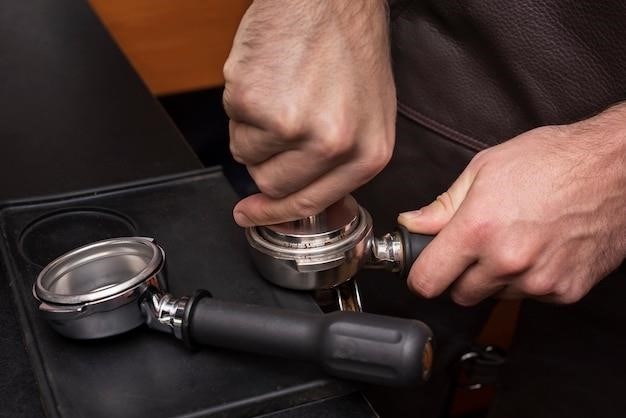Manual Gearbox Flush⁚ A Comprehensive Guide
This comprehensive guide will walk you through the process of flushing your manual gearbox, a crucial maintenance task that ensures smooth shifting and extends the life of your transmission․ We’ll cover the reasons why you should flush your gearbox, when it’s necessary, and the step-by-step process for performing the flush yourself․
Introduction
In the realm of automotive maintenance, the manual gearbox often takes a backseat to the engine, with many drivers focusing primarily on oil changes and filter replacements․ However, the manual transmission, a vital component that allows for precise gear selection and power transfer, also requires regular attention to ensure optimal performance and longevity․ One crucial aspect of manual gearbox maintenance is the fluid flush, a process that removes contaminants, debris, and worn-out fluid, restoring the transmission to its peak operating condition․
A manual gearbox flush is not a routine maintenance task like an oil change, but it is essential for maintaining the health of your transmission․ While the frequency of flushing varies depending on driving habits and vehicle specifications, it is generally recommended every 60,000-70,000 miles or every 5-6 years․ Performing a manual gearbox flush can prevent premature wear and tear, improve shifting smoothness, and ultimately extend the life of your transmission․
Why Flush a Manual Gearbox?
A manual gearbox flush is essential for maintaining the health and performance of your transmission․ Over time, the transmission fluid, responsible for lubricating and cooling the gears and bearings, degrades and becomes contaminated with metal shavings, debris, and other contaminants․ This contaminated fluid can lead to a range of problems, including⁚
- Reduced Lubrication⁚ Contaminated fluid loses its lubricating properties, leading to increased friction and wear on the gears and bearings, potentially causing premature failure․
- Increased Wear and Tear⁚ The abrasive particles in contaminated fluid accelerate wear on the internal components of the transmission, shortening its lifespan․
- Rough Shifting⁚ Contaminated fluid can cause sluggish shifting, making it difficult to engage gears smoothly․
- Noise and Vibration⁚ Increased friction and wear due to contaminated fluid can result in noise and vibration during gear changes․
By flushing the gearbox and replacing the old fluid with fresh, clean fluid, you can eliminate these problems and restore your transmission to optimal operating condition․
When to Flush a Manual Gearbox
While not as frequent as engine oil changes, manual gearbox flushes are essential for maintaining transmission health․ The recommended interval for a gearbox flush varies depending on the vehicle manufacturer, driving conditions, and the type of fluid used․ However, a general rule of thumb is to flush the gearbox every 60,000 to 70,000 miles or every 5 to 6 years․ Here are some specific indicators that might suggest a flush is necessary⁚
- Fluid Color and Smell⁚ If the transmission fluid is dark brown or black and has a burnt smell, it’s a strong indication that the fluid has degraded and needs to be replaced․
- Rough Shifting⁚ If you experience rough shifting, difficulty engaging gears, or grinding noises, it could be a sign of contaminated or low transmission fluid․
- Fluid Leaks⁚ Any visible leaks from the transmission are a sign of potential issues and should be addressed promptly․
- Vehicle Age⁚ Even if your vehicle has not reached the recommended mileage or time interval, it’s a good idea to flush the gearbox if it’s older than 5 to 6 years․
Regular gearbox flushes help prevent transmission problems and ensure smooth shifting for many years to come․
The Process of Flushing a Manual Gearbox
Flushing a manual gearbox is a relatively straightforward process that can be done by anyone with basic mechanical skills․ Here’s a step-by-step guide to help you complete the task safely and efficiently⁚
Before you begin, it’s crucial to gather the necessary tools and materials․ You’ll need a drain pan, a torque wrench, a new drain plug washer (if applicable), and the correct type of transmission fluid for your vehicle․ It’s always a good idea to consult your owner’s manual for specific fluid recommendations․
Once you have everything assembled, park your vehicle on a level surface and engage the parking brake․ Next, locate the filler and drain bolts on your gearbox․ The filler bolt is typically located on the top or side of the gearbox, while the drain bolt is usually found at the bottom․ It’s essential to identify these bolts correctly before proceeding․
Now you’re ready to begin the actual flushing process․ Remember to take your time and work carefully to avoid any mistakes or damage to your transmission․ With the right tools and a bit of patience, you can successfully flush your manual gearbox and keep your vehicle running smoothly․
Step 1⁚ Gather Your Tools
Before you embark on your manual gearbox flush, it’s essential to gather the necessary tools and materials to ensure a smooth and successful process․ Here’s a list of what you’ll need⁚
- Drain Pan⁚ A large drain pan is crucial for catching the old transmission fluid as you drain it from the gearbox․ Make sure the pan is large enough to accommodate the entire volume of fluid․
- Torque Wrench⁚ A torque wrench is essential for tightening bolts to the correct specifications, preventing overtightening or loosening, which could damage the gearbox․
- New Drain Plug Washer⁚ Many drain plugs require a new washer each time they are removed and reinstalled․ It’s best to replace the washer to ensure a proper seal and prevent leaks․
- Correct Transmission Fluid⁚ Refer to your owner’s manual or a reputable mechanic for the correct type of transmission fluid for your vehicle․ Using the wrong fluid can harm your gearbox․
- Gloves⁚ Gloves are recommended for handling the old transmission fluid, which can be messy and potentially harmful to your skin․
With these tools and materials at hand, you’ll be well-equipped to tackle the manual gearbox flush confidently․
Step 2⁚ Locate and Remove the Filler Bolt
The filler bolt is typically located on the top or side of the gearbox, near the transmission case․ It serves as the access point for adding new transmission fluid during the flush process․ To locate it, you may need to consult your vehicle’s service manual or online resources for a specific diagram of your gearbox․
Once you’ve identified the filler bolt, use a wrench or socket to loosen it․ Be careful not to overtighten or strip the bolt․ In some cases, the filler bolt may have a square or hexagonal head, requiring a specialized wrench or socket․ Before removing the bolt completely, make sure you have a drain pan positioned underneath the gearbox to catch any fluid that might drip out․
If the filler bolt is particularly stubborn, you can apply a penetrating fluid, such as WD-40, to help loosen it; Allow the fluid to penetrate for a few minutes before attempting to remove the bolt again․ Once the filler bolt is removed, you can set it aside for later reinstallation․
Step 3⁚ Remove the Drain Bolt
The drain bolt is usually located at the bottom of the gearbox, often towards the rear․ It’s the point where the old transmission fluid will be drained out․ Before you start, ensure you have a drain pan positioned directly underneath the bolt to collect the old fluid․ This is crucial to avoid spills and environmental contamination․
To remove the drain bolt, use a wrench or socket that matches its size․ You might need to apply some force to loosen it, as it may be tightened quite firmly․ Be careful not to overtighten or strip the bolt․ Once the bolt is loosened, you can remove it completely, allowing the transmission fluid to drain into the pan․
It’s essential to let the fluid drain completely before proceeding to the next step․ You may need to wait for a few minutes, depending on the amount of fluid in the gearbox․ Once the fluid has stopped draining, you can safely remove the drain pan and set it aside․ Make sure to dispose of the old transmission fluid properly, as it can be harmful to the environment․

Step 4⁚ Clean the Drain Plug and Surrounding Area
After draining the old transmission fluid, it’s crucial to ensure the drain plug and the surrounding area are clean before reinstalling the plug․ This helps prevent debris from entering the gearbox and contaminating the new fluid․ The presence of contaminants can lead to premature wear and tear on the transmission components․
To clean the drain plug, you can use a wire brush or a piece of clean cloth․ Scrub the plug thoroughly to remove any debris or old gasket material․ If the drain plug has a magnetic tip, be sure to clean it as well․ Magnetic tips help attract metal particles from the transmission fluid, so it’s important to keep them clean․
Next, clean the area around the drain plug using a clean rag or brush․ Remove any dirt, grime, or old fluid that may be present․ This will ensure a clean and leak-free seal when you reinstall the drain plug․ Once the drain plug and the surrounding area are clean, you can move on to the next step․
Step 5⁚ Reinstall the Drain Plug
With the drain plug and surrounding area thoroughly cleaned, you’re ready to reinstall the drain plug․ Before tightening the plug, inspect the drain plug’s gasket․ If the gasket is damaged or worn, replace it with a new one․ A damaged gasket can lead to leaks, contaminating the new transmission fluid and potentially damaging the gearbox․
Align the drain plug with the drain hole and carefully thread it back into place․ Tighten the plug using a wrench or socket, but be careful not to overtighten it․ Overtightening the plug can damage the threads and lead to leaks; Refer to your vehicle’s service manual for the recommended torque specification․
Once the drain plug is securely tightened, inspect the area for any leaks․ If you see any leaks, immediately tighten the plug further, but again, be careful not to overtighten it․ If the leak persists, you may need to replace the drain plug or its gasket․ After ensuring the drain plug is properly installed and there are no leaks, you can move on to the next step․
Step 6⁚ Fill the Gearbox with New Fluid
With the drain plug securely in place, you’re ready to fill the gearbox with fresh transmission fluid․ Before adding the new fluid, consult your vehicle’s owner’s manual or service manual to determine the correct type and quantity of transmission fluid required․ Using the wrong type of fluid can damage your gearbox, while using too little or too much fluid can affect performance․
Locate the filler bolt, usually situated near the top of the gearbox․ It may be a different size or shape than the drain bolt․ Remove the filler bolt using a wrench or socket․ Once the filler bolt is removed, you can begin pouring the new transmission fluid into the gearbox․
Carefully pour the new transmission fluid into the gearbox, ensuring that you don’t overfill it․ Overfilling the gearbox can cause excessive pressure and damage internal components․ When the fluid level reaches the filler hole, stop pouring․ Reinstall the filler bolt and tighten it securely using a wrench or socket․ Refer to your vehicle’s service manual for the recommended torque specification․
